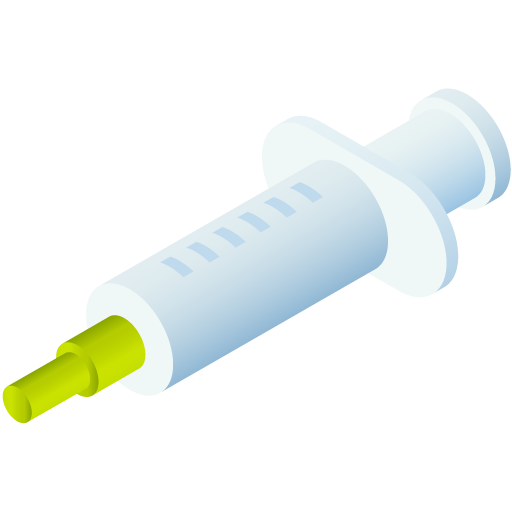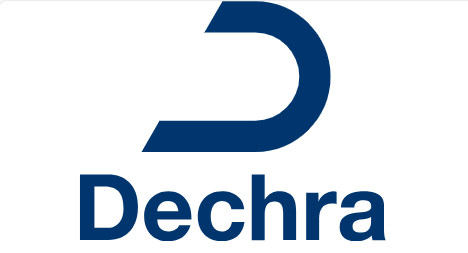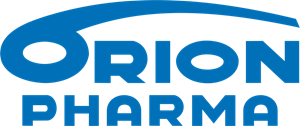Similar packages
Noropraz vet.
ATC code
Species
Horses.
Indications
For the treatment of mixed cestode and nematode or arthropod infestations, due to adult and immature roundworms, lungworms, bots and tapeworms in horses:
Nematodes:
Large strongyle:
Strongylus vulgaris (adult and arterial larvae),
Strongylus edentatus (adult and L4 tissue larval stages), Strongylus equinus (adult), Tridontophorus spp.(adult).
Small strongyle:
Cyathostomum: Cylicocyclus spp.,
Cylicostephanus spp.,
Cylicodontophorus spp.,
Gyalocephalus spp. (adult and non-inhibited mucosal larvae).
Parascaris: Parascaris equorum (adult and larvae),
Oxyuris: Oxyuris equi (larvae),
Trichostrongylus: Trichostrongylus axei (adult),
Strongyloides: Strongyloides westeri (adult),
Habronema: Habronema spp. (adult),
Onchocerca: Onchocerca spp. microfilariae i.e. cutaneous onchocerciasis, Lungworm: Dietyocaulus arnfieldi (adult and larvae).
Cestodes (Tapeworm):
Anoplocephala perfoliata (adult),
Anoplocephala magna (adult), Paranoplocephala mamillana (adult).
Dipteran insects:
Gasterophilus spp. (larvae).
Dose to be administered and administration route
Oral use.
Single administration.
200 µg of lvermectin and 1.5 mg of Praziquantel per kg of bodyweight corresponding to 1.07 g of paste per 100 kg bodyweight.
To ensure administration of a correct dosage, bodyweight should be determined as accurately as possible and the correct syringe division selected, as underdosing might lead to an increased risk of development of resistance to anthelmintic drugs.
|
Weight |
Dosage |
Weight |
Dosage |
|
Up to 100 kg |
1.070 g |
401 – 450 kg |
4.815 g |
|
101 – 150 kg |
1.605 g |
451 – 500 kg |
5.350 g |
|
151 – 200 kg |
2.140 g |
501 – 550 kg |
5.885 g |
|
201 – 250 kg |
2.675 g |
551 – 600 kg |
6.420 g |
|
251 – 300 kg |
3.210 g |
601 – 650 kg |
6.955 g |
|
301 – 350 kg |
3.745 g |
651 – 700 kg |
7.490 g |
|
351 – 400 kg |
4.280 g |
The first division delivers enough paste to treat 50 kg.
Each subsequent syringe division delivers enough paste to treat 50 kg of bodyweight. The syringe should be adjusted to the calculated dosage by setting the ring on the appropriate place on the plunger.
The syringe contains 7.49 g of paste and delivers sufficient paste to treat 700 kg of bodyweight at the recommended dose rate.
Directions for use
Before administration, adjust the syringe to the calculated dosage by setting the ring on the plunger. The paste is administered orally by inserting the nozzle of the syringe through the interdental space and depositing the required amount of the paste on the back of the tongue. The animal's mouth should be free of any food. Immediately after administration, elevate the head of the horse for a few seconds to ensure the dose is swallowed.
The veterinary surgeon should give advice regarding appropriate dosing programmes and stock management to achieve adequate parasite control for both tapeworm and roundworm infestations.
Adverse reactions
Target species: Horses.
|
Very rare (<1 animal / 10,000 animals treated, including isolated reports): |
Itching; Colic2, 3, Diarrhoea2, 3, Allergic reaction4 (such as Hypersalivation, Tongue oedema, Urticaria, Tachycardia, Congested mucous membranes, Cutaneous oedema) |
1 In horses carrying heavy infection of Onchocerca microfilariae, assumed to be as a result of the destruction of large number of microfilariae.
2 Caused by destruction of parasites in cases of very high levels of infestation.
3 Mild and transient.
4 A veterinarian should be consulted if these signs persist.
Reporting adverse events is important. It allows continuous safety monitoring of a veterinary medicinal product. Reports should be sent, preferably via a veterinarian, to either the marketing authorisation holder or the national competent authority via the national reporting system. See the package leaflet for respective contact details.
Dispensing
POM-VPSSUMMARY OF PRODUCT CHARACTERISTICS
1. NAME OF THE VETERINARY MEDICINAL PRODUCT
Noropraz, 18.7 mg/g + 140.3 mg/g Oral Paste for Horses Ivermectin and Praziquantel
2. QUALITATIVE AND QUANTITATIVE COMPOSITION
Each gram contains:
Active substance:
Ivermectin 18.7 mg Praziquantel 140.3 mg
Excipient(s):
Titanium Dioxide (E171) 20 mg
For the full list of excipients, see section 6.1.
3. PHARMACEUTICAL FORM
Oral paste
A white to off white homogenous paste
4. CLINICAL PARTICULARS
4.1 Target species
Horses
4.2 Indications for use,specifying the target species
For the treatment of mixed cestode and nematode or arthropod infestations, due to adult and immature roundworms, lungworms, bots and tapeworms in horses:
Nematodes:
Large strongyle:
Strongylus vulgaris (adult and arterial larvae)
Strongylus edentatus (adult and L4 tissue larval stages) Strongylus equinus (adult), Tridontophorus spp. (adult)
Small strongyle:
Cyathostomum: Cylicocyclus spp., Cylicostephanus spp., Cylicodontophorus spp.,
Gyalocephalus spp. (adult and non-inhibited mucosal larvae)
Parascaris: Parascaris equorum (adult and larvae)
Oxyuris: Oxyuris equi (larvae)
Trichostrongylus: Trichostrongylus axei (adult)
Strongyloides: Strongyloides westeri (adult)
Habronema: Habronema spp. (adult)
Onchocerca: Onchocerca spp. microfilariae i.e. cutaneous onchocerciasis Lungworm: Dictyocaulus arnfieldi (adult and larvae)
Cestodes (Tapeworm):
Anoplocephala perfoliata (adult)
Anoplocephala magna (adult) Paranoplocephala mamillana (adult)
Dipteran insects:
Gasterophilus spp. (larvae)
4.3 Contraindications
Do not use in foals under 2 weeks of age.
Do not use in case of hypersensitivity to the active substances or to any of the excipients.
4.4 Special warnings <for each target species>
Care should be taken to avoid the following practices because they increase the risk of development of resistance and could ultimately result in ineffective therapy:
- Too frequent and repeated use of anthelmintics from the same class, over an extended period of time.
- Underdosing, which may be due to underestimation of body weight, misadministration of the product, or lack of calibration of the dosing device
Suspected clinical cases of resistance to anthelmintics should be further investigated using appropriate tests (e.g. Faecal Egg Count Reduction Test). Where the results of the test(s) strongly suggest resistance to a particular anthelmintic, an anthelmintic belonging to another pharmacological class and having a different mode of action should be used.
Resistance to ivermectin (an avermectin) has been reported in Parascaris equorum in horses in a number of countries including in the EU. Therefore the use of this product should be based on local (regional farm) epidemiological information about susceptibility of nematodes and recommendations on how to limit further selection for resistance to anthelmintics.
As tapeworm infestation is unlikely to occur in horses before two months of age, treatment of foals below this age is not considered necessary.
4.5 Special precautions for use
Special precautions for use in animals
Avermectins may not be well tolerated in all non target animals. Cases of intolerance are reported in dogs, especially Collies, Old English Sheepdogs and related breeds or crosses, and also in turtle and tortoises.
Dogs and cats should not be allowed to ingest spilled paste or access to used syringes due to the potential for adverse effects related to ivermectin toxicity.
Special precautions to be taken by the person administering the veterinary medicinal product to animals
Wash hands after use.
Do not eat, drink or smoke while handling this product.
Avoid contact with the eyes as the product may cause eye irritation.
In case of accidental eye contact, rinse immediately with plenty of water.
In case of accidental ingestion or eye irritation, seek medical advice and show the package leaflet or label to the physician.
4.6 Adverse reactions (frequency and seriousness)
Horses carrying heavy infection of Onchocerca microfilariae have experienced such reactions as swelling and itching after treatment. It is assumed that these reactions are the result of the destruction of large numbers of microfilariae.
In case of very high levels of infestation, destruction of the parasites may cause a mild transient colic and loose faeces in the treated horse.
Colic, diarrhea and anorexia have been reported in very rare occasions post treatment, in particular when there is heavy worm burden.
In very rare occasions, allergic reactions such as hypersalivation, lingual oedema and urticaria, tachycardia, congested mucus membranes, and subcutaneous oedema have been reported following treatment with the product. A veterinarian should be consulted if these signs persist.
The frequency of adverse reactions is defined using the following convention: - very rare (less than 1 animal in 10,000 animals treated, including isolated reports.
4.7 Use during pregnancy, lactation or lay
Can be used during pregnancy and lactation.
4.8 Interaction with other medicinal products and other forms of interaction
None known
4.9 Amounts to be administered and administration route
For oral use
Single administration
200 µg of Ivermectin and 1.5 mg of Praziquantel per kg of bodyweight corresponding to 1.07 g of paste per 100 kg bodyweight
To ensure administration of a correct dose, bodyweight should be determined as accurately as possible and the correct syringe division selected, as underdosing might lead to an increased risk of development of resistance to anthelmintic drugs.
|
Weight |
Dosage |
Weight |
Dosage |
|
Up to 100 kg |
1.070 g |
401 – 450 kg |
4.815 g |
|
101 – 150 kg |
1.605 g |
451 – 500 kg |
5.350 g |
|
151 – 200 kg |
2.140 g |
501 – 550 kg |
5.885 g |
|
201 – 250 kg |
2.675 g |
551 – 600 kg |
6.420 g |
|
251 – 300 kg |
3.210 g |
601 – 650 kg |
6.955 g |
|
301 – 350 kg |
3.745 g |
651 – 700 kg |
7.490 g |
|
351 – 400 kg |
4.280 g |
|
|
The first division delivers enough paste to treat 50 kg.
Each subsequent syringe division delivers enough paste to treat 50 kg of bodyweight. The syringe should be adjusted to the calculated dosage by setting the ring on the appropriate place on the plunger.
The syringe contains 7.49 g of paste and delivers sufficient paste to treat 700 kg of bodyweight at the recommended dose rate.
Directions for use
Before administration, adjust the syringe to the calculated dosage by setting the ring on the plunger. The paste is administered orally by inserting the nozzle of the syringe through the interdental space and depositing the required amount of the paste on the back of the tongue. The animal’s mouth should be free of any food. Immediately after administration, elevate the head of the horse for a few seconds to ensure the dose is swallowed.
The veterinary surgeon should give advice regarding appropriate dosing programmes and stock management to achieve adequate parasite control for both tapeworm and roundworm infestations.
4.10 Overdose (symptoms, emergency procedures, antidotes), if necessary
A tolerance study performed in foals from 2 weeks of age with doses up to 5 times the recommended dosage showed no adverse reactions.
Safety studies conducted in mares administered 3 times the recommended dosage at 14 day intervals during the whole gestation and lactation did not show any abortions, any adverse effects on the gestation, parturition and on the mares general health, nor any abnormalities on the foals.
Safety studies conducted in stallions administered 3 times the recommended dosage did not show any adverse effects in particular on the reproductive performances.
4.11 Withdrawal period(s)
Horses: Meat & Offal: 35 days
Not authorised for use in horses producing milk for human consumption
5. PHARMACOLOGICAL PROPERTIES
Pharmacotherapeutic group: Endectocides, ivermectin, combinations ATCvet code: QP 54AA51
5.1 Pharmacodynamic properties
Ivermectin is a macrocyclic-lactone derivative which has a broad antiparasitic activity against nematodes and arthropods. It acts by inhibiting nerve impulses. Its mode of action includes the glutamate-gated chloride ion channels. Ivermectin binds selectively and with high affinity to glutamate-gated chloride ion channels which occur in invertebrate nerve and muscle cells. This leads to an increase in the permeability of the cell membrane to chloride ions with hyperpolarization of the nerve or muscle cell, resulting in paralysis and death of the relevant parasites. Compounds of this class may also interact with other ligand-gated chloride channels, such as those gated by the neurotransmitter gamma-aminobutyric acid (GABA). The margin of safety for compounds of this class is attributable to the fact that mammals do not have glutamate-gated chloride channels.
Praziquantel is a pyrazinoisoquinoline derivative which exerts its anthelmintic activity against many species of cestodes and trematodes. It primarily acts by impairing both motility and function of the suckers of cestodes. Its mode of action includes the impairing of neuromuscular co-ordination but also influencing the permeability of the integument of the worms, which leads to excessive calcium and glucose loss. This induces spastic paralysis of the parasite musculature.
5.2 Pharmacokinetic particulars
After administration of the recommended dosage to horses, the ivermectin plasma peak was reached within 24 hours. The ivermectin concentration was still over 2 ng/ml 14 days after administration. The elimination half-life of ivermectin was 90h.. The elimination half-life of praziquantel was 40 min.
6. PHARMACEUTICAL PARTICULARS
6.1 List of excipients
Hydrogenated castor oil
Hydroxypropylcellulose
Titanium dioxide (E171)
Apple Flavour
Propylene glycol
6.2 Major Incompatibilities
Not applicable
6.3 Shelf life
Shelf-life of the veterinary medicinal product as packaged for sale: 18 months
Shelf-life after first opening the immediate packaging: 6 months
6.4 Special precautions for storage
Do not store above 25°C
After use, replace cap and store below 25oC.
6.5 Nature and composition of immediate packaging
An adjustable multidose oral syringe composed of polyethylene barrel, plunger and end cap, with polypropylene dosing rings. The oral syringe contains 7.49g of product and is fitted with variable dose capacity.
The oral paste is available in the following pack sizes: - 1 carton box containing 1 x 7.49g oral syringe
- 1 carton box containing 2 x 7.49g oral syringes
- 1 carton box containing 12 x 7.49g oral syringes
- 1 carton box containing 40 x 7.49g oral syringes
- 1 carton box containing 48 x 7.49g oral syringes
- 1 carton box containing 50 x 7.49g oral syringes
Not all pack sizes may be marketed.
6.6 Special precautions for the disposal of unused veterinary medicinal product or waste materials derived from the use of such products
EXTREMELY DANGEROUS FOR FISH AND AQUATIC LIFE. Do not contaminate surface waters or ditches with product or used syringes.
Any unused veterinary medicinal product or waste materials derived from such veterinary medicinal products should be disposed of in accordance with local requirements.
7. MARKETING AUTHORISATION HOLDER
Norbrook Laboratories Limited
Station Works
Newry
Co. Down BT35 6JP
United Kingdom
8. MARKETING AUTHORISATION NUMBER
Vm 02000/4365
9. DATE OF FIRST AUTHORISATION
15 October 2013
10 DATE OF REVISION OF THE TEXT
October 2018
Approved: 18 October 2018


| Art. Nr. | |
|---|---|
| EAN | 5023534019992 |
 TRUSTED SOURCE
TRUSTED SOURCE








